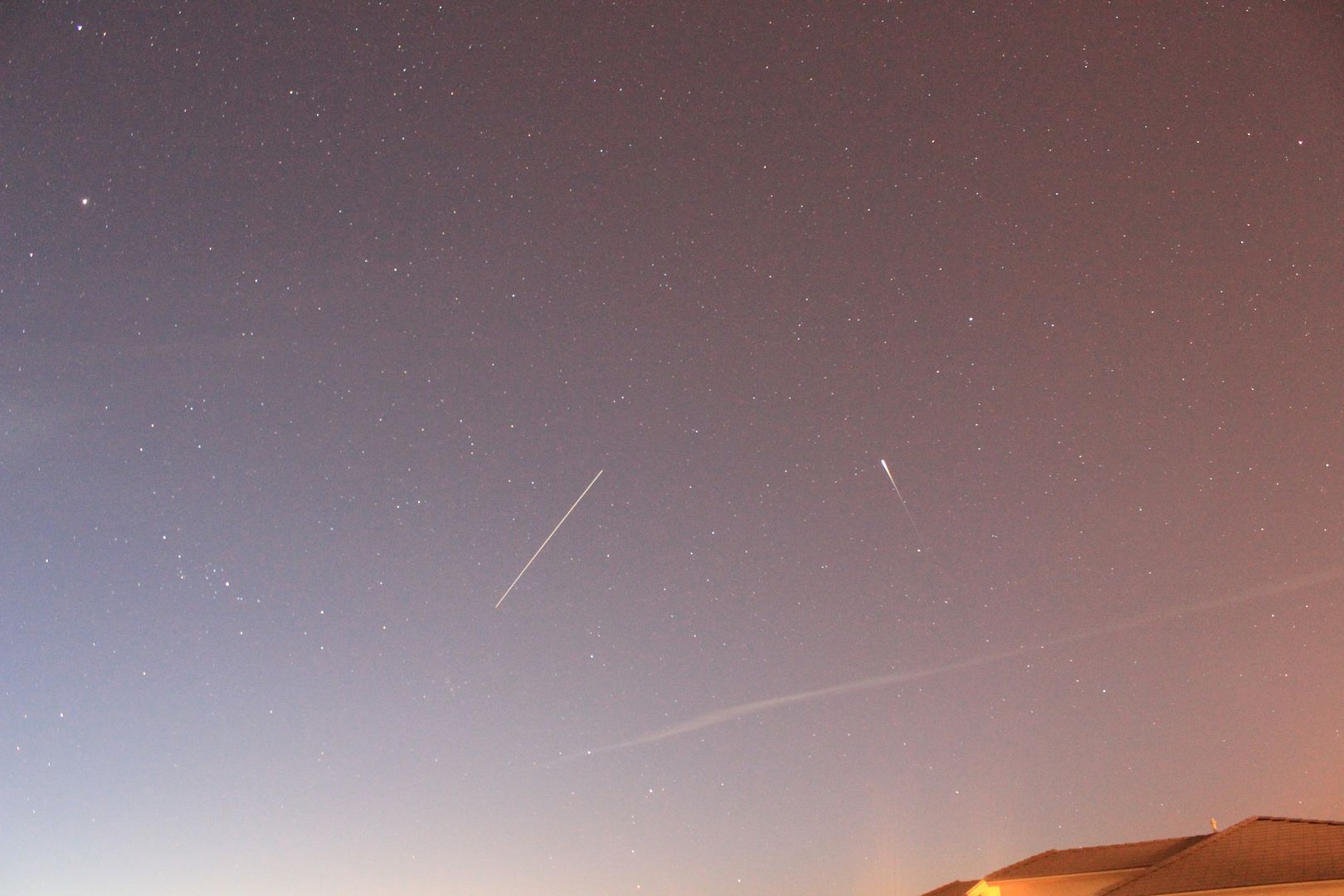 |
| ISS & Iridium Flare Canon T3i, 18mm, 30 sec., ISO 3200 |
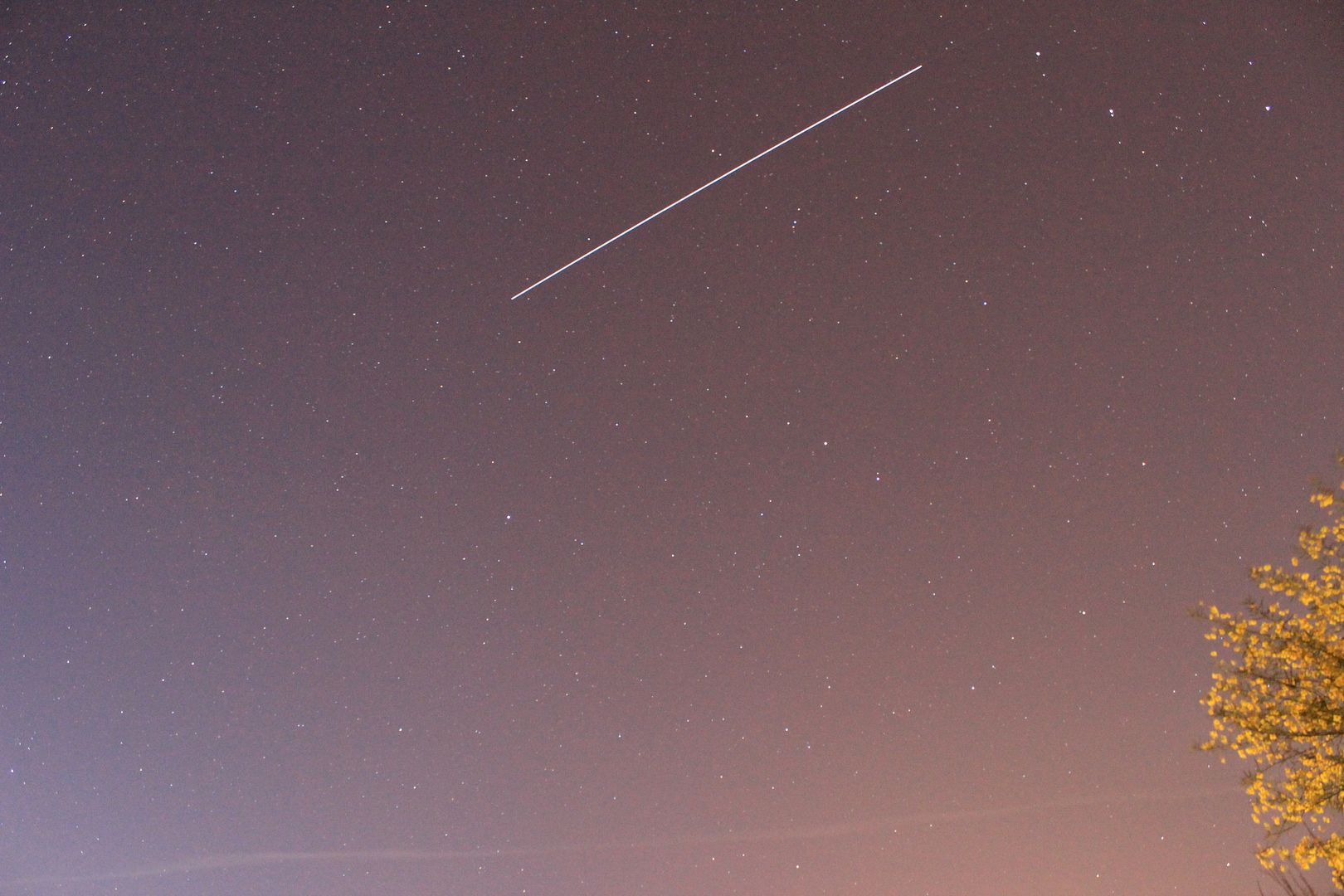 |
| ISS & Progress Module Canon T3i, 18mm, 30 sec., ISO 3200 |
Can you spot it? Look at the bright, trailed streak of the ISS and notice that there is a fainter line out ahead of it. According to NASA that is the trail of the Progress 53 cargo craft that is currently undocked from the ISS. It is easier to see in the next shot.
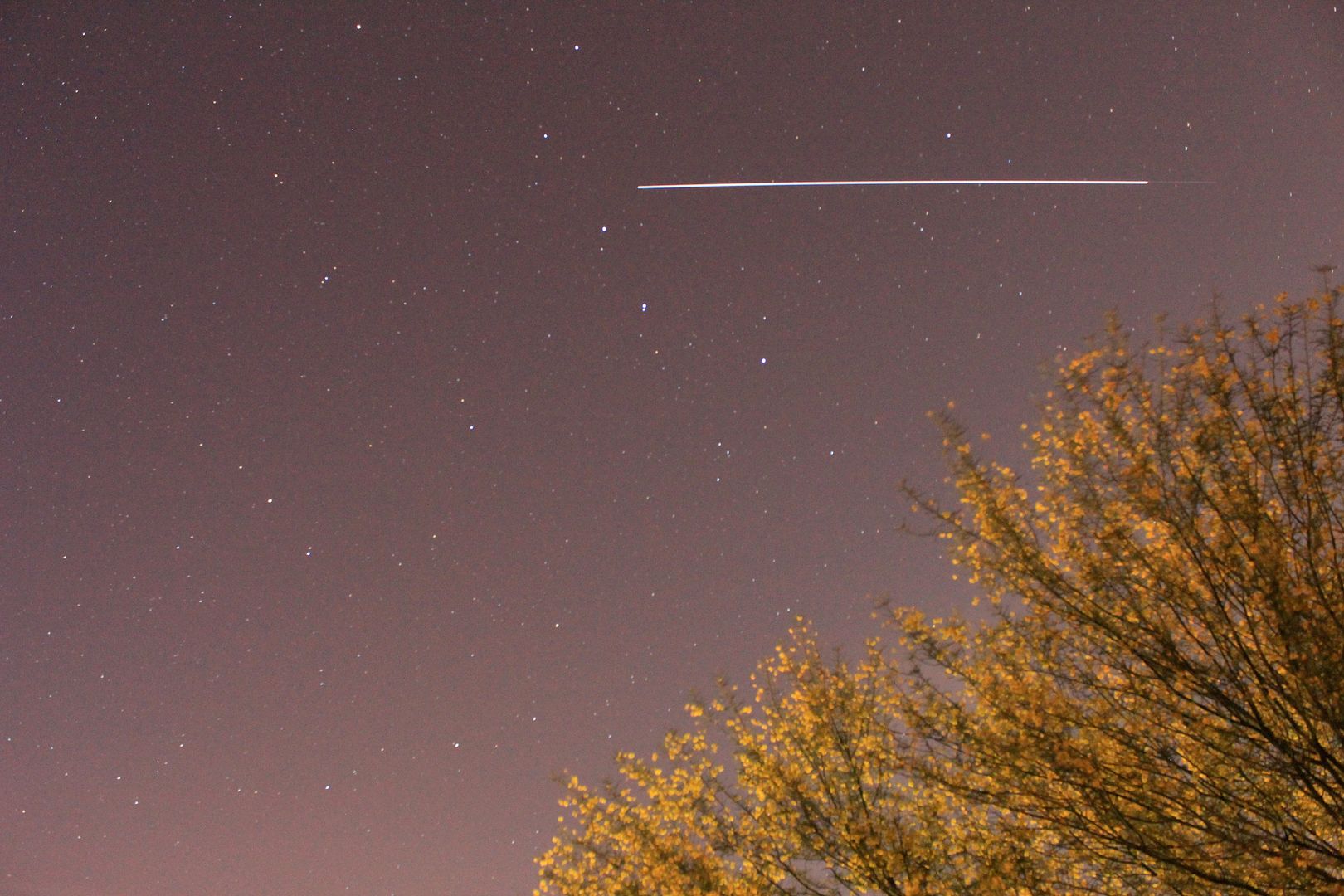 |
| ISS & Progress Module Canon T3i, 18mm, 30 sec., ISO 3200 |
Again, the bright light is the full ISS and the faint line is the Progress module that is currently leading the ISS in orbit. According to the NASA site I linked above the Progress is doing "two days of free-flying orbital tests" and will re-dock with the ISS on Friday morning.
The Progress module is so much fainter than the ISS because it is so much smaller than the ISS. It checks in at being 7.23 meters long, whereas the ISS is about the size of a football field.
The first time I ever saw co-orbital satellites like this was back in the day when the Space Shuttle was visiting the Russion Mir space station. It was pretty exciting back then and certainly great fun to see something similar tonight.
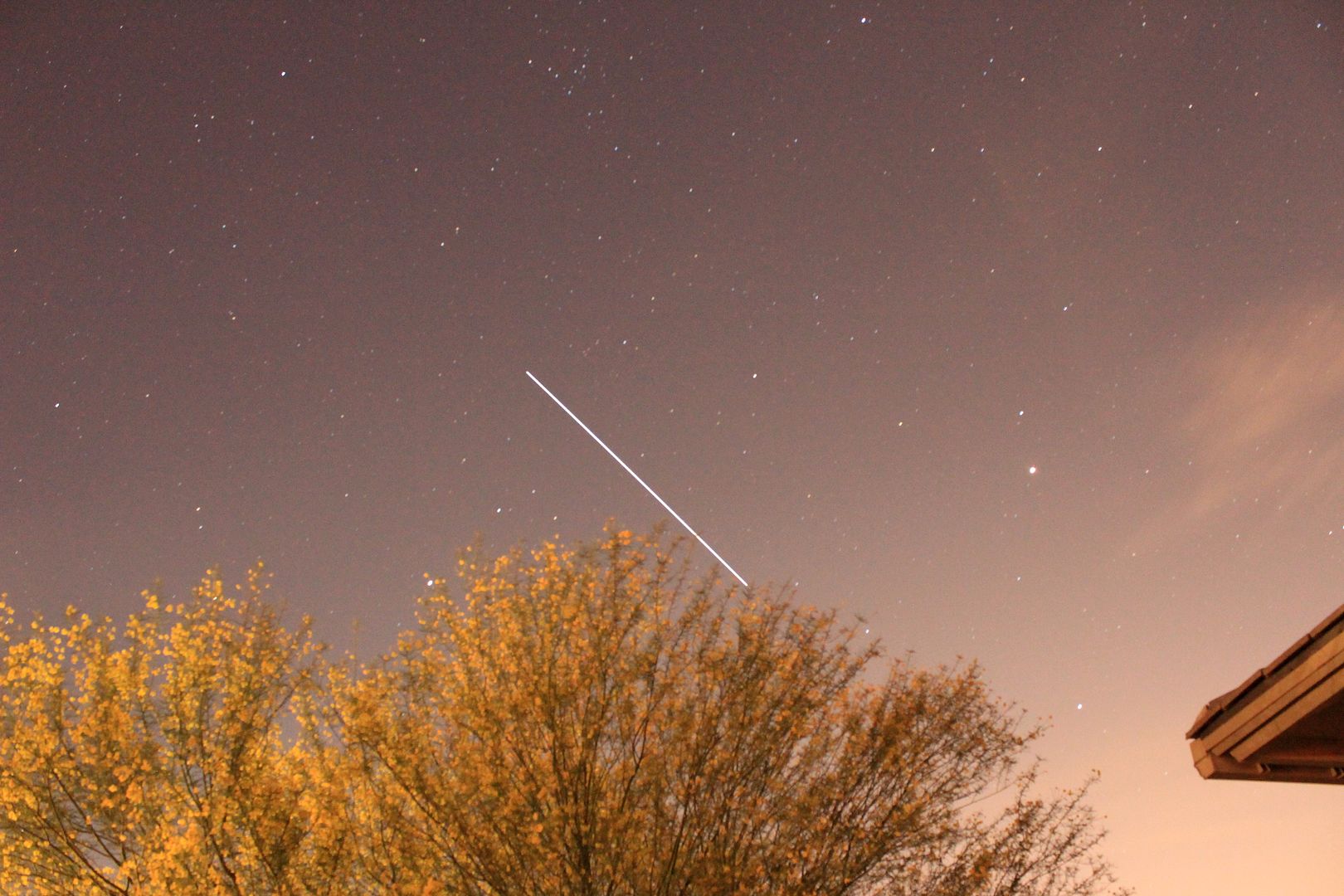 |
| ISS & Progress Module Canon T3i, 18mm, 30 sec., ISO 3200 |
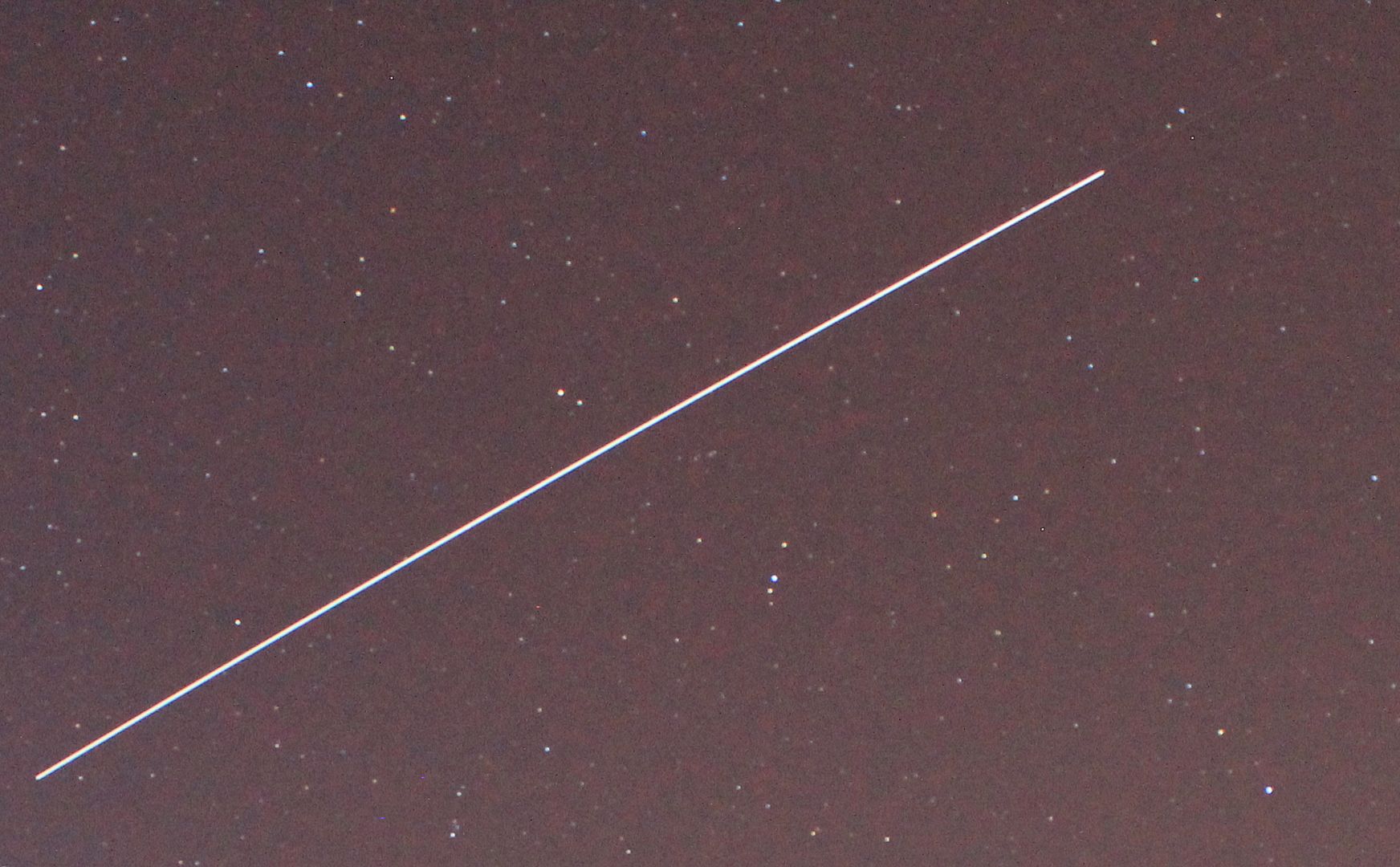
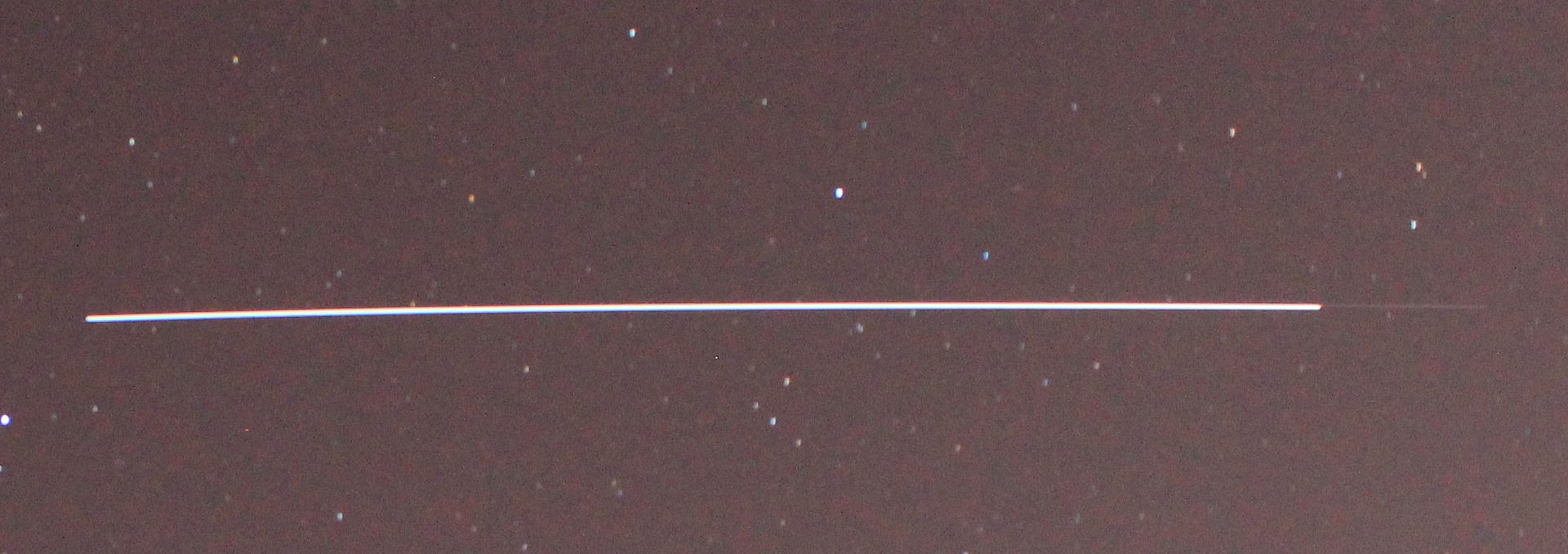
This comment has been removed by the author.
ReplyDelete